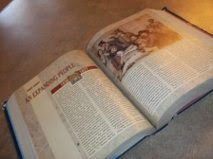Back to School
by Judy
“But I don’t want to be in Mr. Jones’s homeroom. He is no
fun. He doesn’t let anybody do anything in his homeroom,” my younger daughter
complained.
“Who doesn’t get to do what?” I asked, figuring some
clearer explanation was needed before I called the overworked guidance
counselor the day before school started about getting her homeroom changed.
“You know, everybody, just everybody. They don’t get to do
anything they want to do,” she rephrased.
After thirty minutes of strategic questioning, I discovered
Mr. Jones was known for running a quiet homeroom, conducive for getting
homework done, and my daughter’s friends were in a different homeroom with a
“more relaxed teacher.”
How did summer go by so quickly? How come school started so
early? And, where was I going to find money for school clothes, registration
and book fees? More importantly, how was I going to get the kids out of bed, to
their respective schools and me to the office before 8:00 in the morning?
“It’s not fair. Why does he get paid $5.00 just to go to
school and the rest of us have to go without pay? I want paid too,” said my
other son.”
Upon reflection it probably wasn’t fair, but it had been a
rough morning. I forgot to start the dryer the night before, and my black
slacks were still wet. My working wardrobe basically consisted of three
blouses, a black pair of pants and a brown pair of pants. I had worn the brown
pants the two previous days. I wanted to wear my black ones that morning.
My husband had an early morning meeting and left an hour
earlier than normal. The kids ate Twinkies (again) for breakfast and not the
nutritional eggs, bacon or pancakes he normally served them. My morning job was
to round up shoes, jackets, homework, school lunches or meal tickets, gym
suits, eye glasses, violin, music, science project…. I also authored any needed written excuses.
One morning my younger son, never fond of school, revived
the temper tantrums he perfected at an earlier age and raged full strength
against going to school. I feared I might lightly swat his backside and placed
my hands in the pockets of my damp slacks. I felt the neatly folded, albeit
damp, $5 bill. It was only natural I offer to pay the kid to calm down and go
to school. No fool, he quickly grabbed the money and stuffed it in the dry
pocket of his clean jeans.
Yes, it was a bad precedent to set, but a mother has to do
what a mother has to do.







